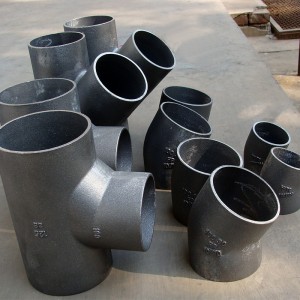Dez . 11, 2024 09:29 Back to list
Sand Casting Manufacturing Facility for Precision Metal Components and Custom Solutions
The Sand Casting Factory A Pillar of Modern Manufacturing
In the realm of manufacturing, the sand casting process stands out as a cornerstone for producing complex metal parts. This versatile method has been a staple of manufacturing since ancient times, owing to its effectiveness, cost-efficiency, and the variety of materials it can utilize. A sand casting factory is not merely a production facility; it is a dynamic environment where design, innovation, and craftsmanship converge to meet the demands of various industries.
Understanding the Sand Casting Process
At its core, sand casting involves creating a sand mold to shape molten metal into desired forms. This process begins with the design and fabrication of the mold. Sand, typically mixed with clay and water, is compacted around a pattern that represents the shape of the finished product. Once the mold is prepared, the pattern is removed, leaving a cavity to be filled with molten metal. The flexibility of sand as a medium allows for the creation of intricate designs and large castings, making it applicable to industries ranging from aerospace to automotive, from mechanical components to even artistic sculptures.
The Role of Technology in Sand Casting
Modern sand casting factories leverage advanced technologies to enhance the traditional processes. Computer-Aided Design (CAD) software allows engineers to create precise and complex designs, which can then be translated into patterns for casting. Furthermore, the integration of 3D printing technology has revolutionized mold making. Rapid prototyping enables quicker design iterations, facilitating a more efficient production cycle.
Additionally, the use of automated machinery in sand preparation and molding processes has improved accuracy and consistency, reducing human error and increasing throughput. This automation also supports better safety standards within the factory, as machines handle the most dangerous aspects of the casting process.
Environmental Considerations
As with any manufacturing process, environmental sustainability has become a focal point for sand casting factories. The industry has seen significant advances in reducing waste and emissions. Reclamation systems are now employed to recycle used sand, minimizing the need for new materials and reducing landfill contributions. Additionally, eco-friendly binders are utilized to replace traditional chemicals, further lessening the environmental footprint of sand casting operations.
sand casting factory

Factories are also implementing better dust collection systems and ventilation to improve air quality within production areas. These changes not only protect workers but also align with global initiatives aimed at reducing industrial pollution. The commitment to sustainable practices reflects a broader trend in manufacturing as industries adapt to changing regulations and consumer expectations regarding environmental responsibility.
The Workforce Behind the Casting Process
The success of a sand casting factory hinges on its workforce. Skilled operators, engineers, and quality control specialists play vital roles in ensuring that each casting meets stringent industry standards. Training programs in metallurgy and casting techniques equip employees with the necessary knowledge to adapt to technological advancements and uphold quality assurance protocols.
Moreover, fostering a culture of continuous improvement is essential. Operators are encouraged to share insights and propose enhancements to existing processes, leading to innovative solutions that can increase efficiency and reduce costs.
Challenges and Future Directions
Despite its many advantages, the sand casting industry faces challenges such as fluctuating raw material costs and increasing competition from alternative manufacturing processes like die casting and investment casting. To remain competitive, factories must continuously innovate, emphasizing research and development to explore new materials and techniques.
Looking forward, the incorporation of artificial intelligence and machine learning into the production process holds great promise. These technologies can optimize production schedules, predict maintenance needs, and enhance quality control measures, ultimately driving down costs and improving product reliability.
Conclusion
The sand casting factory serves as a essential part of the modern manufacturing landscape, blending tradition with innovation. It showcases the balance between skilled craftsmanship and cutting-edge technology. As industries evolve and sustainability becomes increasingly important, sand casting facilities are adapting to meet these new demands through modernization and continuous improvement. The future of sand casting looks bright, poised to contribute significantly to technological advancements and sustainable manufacturing practices in the years to come.
-
Durable Centrifugally Cast Iron Water Main Pipe
NewsAug.11,2025
-
Centrifugally Cast Iron Water Main Pipes for Reliability
NewsAug.10,2025
-
High-Quality Centrifugally Cast Iron Water Main Pipes
NewsAug.09,2025
-
Durable Cast Iron Water Main Pipe & Drainage Solutions
NewsAug.08,2025
-
Buy Cast Iron Pipe: Premium Ductile Iron & Drain Solutions
NewsAug.07,2025
-
Durable Cast Iron Water Main Pipe | Buy Ductile Pipe
NewsAug.06,2025


